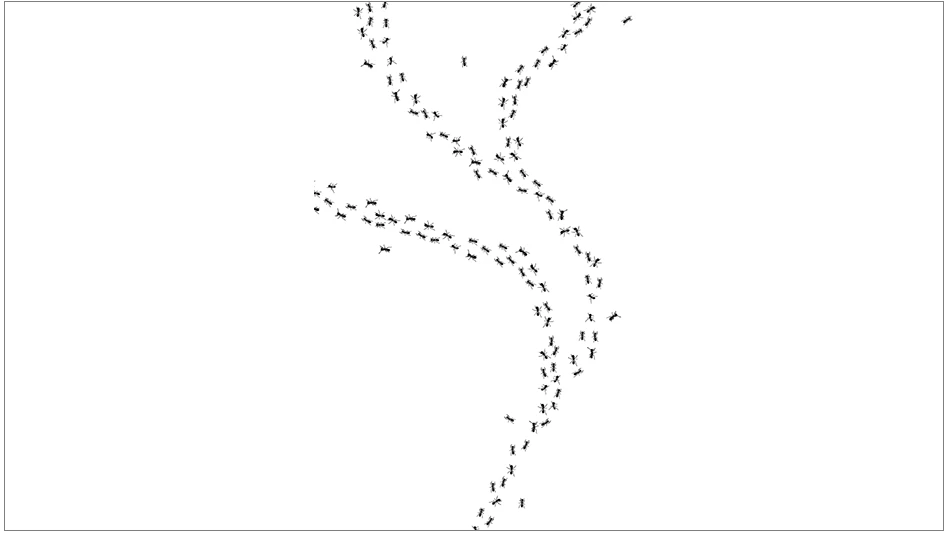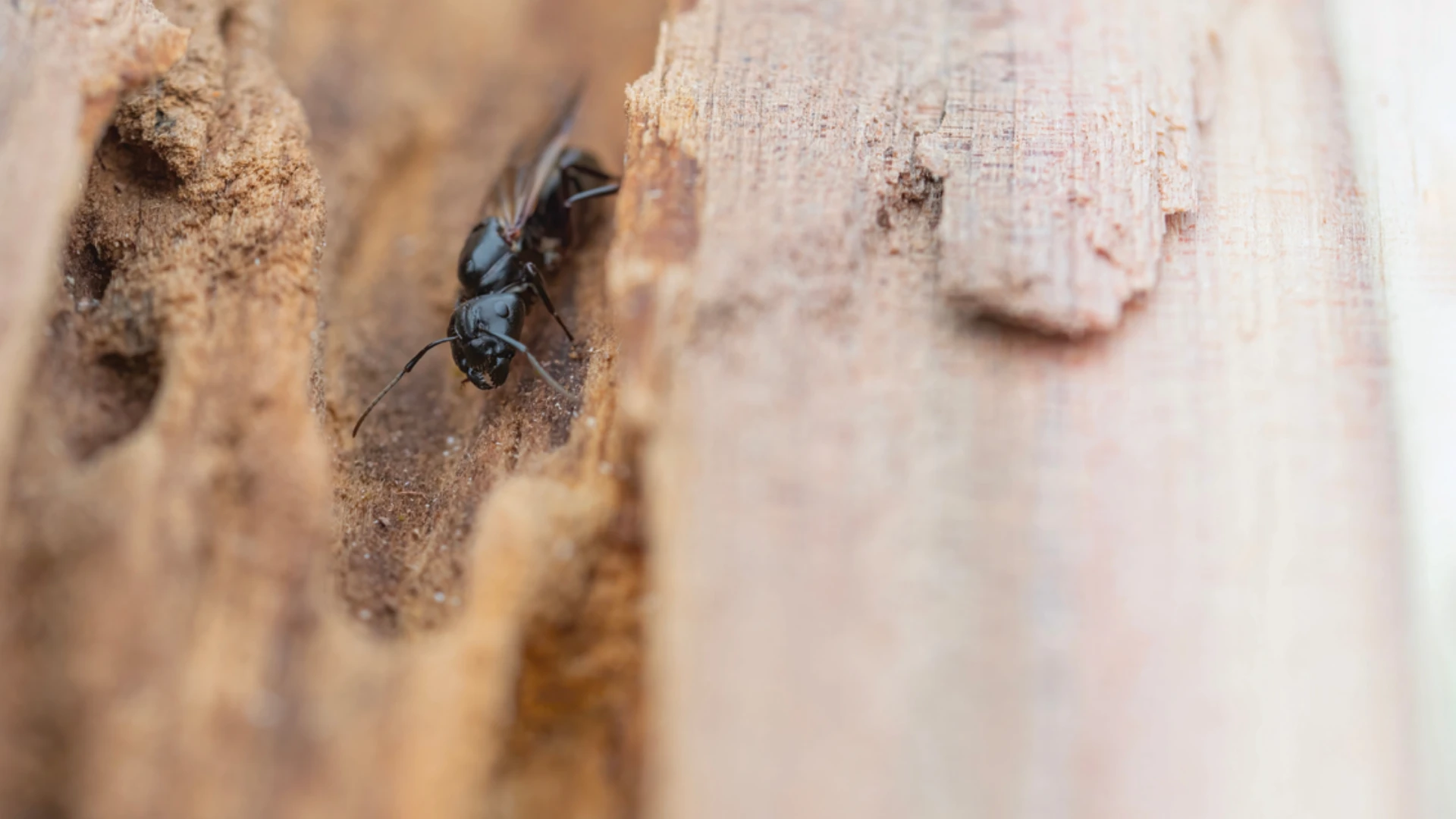
ATLANTA — In January, Rollins announced that its subsidiary, Clark Pest Control of Stockton, had entered into an agreement to acquire Clark Pest Control, based in Bakersfield, Calif. The transaction was completed in February.
Clark Pest Control was founded in Fresno, Calif., in the 1940s by two brothers, Jim Clark Sr. and Charlie Clark. Early in the development of their business, the brothers decided to build separate businesses by splitting up — Charlie went north to Stockton while Jim Sr. went south to Bakersfield. They continued to share the Clark Pest Control name, and their respective businesses grew.
In 2019, Rollins acquired Charlie Clark’s business, Clark Pest Control of Stockton.
Today, Jim Clark Sr.’s business, Clark Pest Control, has more than 160 employees operating from offices in Bakersfield, Fresno, Lancaster, Santa Clarita and Visalia. Completion of this acquisition will rejoin the two companies. Once integrated, Clark Pest Control will have more than 1,300 dedicated employees providing pest control services from 28 locations throughout California and northern Nevada.
“It has been a long-held dream of ours to bring the two Clark Pest Control companies back together,” says Robert Baker, president of Clark Pest Control of Stockton. “We are happy that as one combined company going forward, we will be optimally positioned to serve our markets in California and Nevada with the finest pest management and associated services.”

Burns Pest Elimination Technician Rescues Toddler Who Wandered Into Traffic
LAS VEGAS — Thanks to the actions of Eric Espinosa, a service technician with Burns Pest Elimination, a Las Vegas toddler who had wandered into traffic was safely returned to his family.
While driving down a busy two-lane road in a residential neighborhood in February, Espinosa spotted, from a distance, what he thought was a toy, doll or perhaps a clothed dog in the middle of the road. “As I got closer, I could see it moving and I was shocked to see it was a baby, and that cars were whizzing past him,” said Espinosa, who estimated the child was about 18 months old (just old enough to walk).
Thinking quickly on his feet, Espinosa pulled his truck in the middle of the road to block off traffic and removed the toddler from harm’s way. Espinosa gave him water and tried to get as much information from him as possible to seek out his parents/caretakers from nearby houses.
After getting no responses from neighbors, he called 911 and police arrived on scene within minutes.
Espinosa also called the company’s Las Vegas branch manager Becky Chudinis, who soon arrived on scene to help comfort the child.
After an hour had passed, the boy’s distraught father, who had been searching for him, arrived on bicycle. Evidently, the boy had been accidentally left alone at his grandfather’s apartment because of miscommunication between the grandfather and father, a Burns Pest Elimination spokesperson told PCT.
Espinosa said he was relieved everything turned out OK. “I have a 2-year-old son and I gave him a tighter hug when I got home,” he said. “I’m happy that the company I work for put aside being managers and business owners, and were humans caring for kids.”
Mike Boyle, who handles public relations for Burns Pest Elimination, said although this situation was uncommon, it’s not unusual for Burns service professionals to perform good deeds that fall outside of their job description. “What brings a lot of people to (pest control) is they enjoy helping people. We are extremely proud of what Eric did because it symbolizes what we at Burns Pest Elimination are here to do, and that is to serve the public.”
A Cleveland, Ohio, area native and Army National Guard veteran, Espinosa, age 32, has been working in pest control for six years, the last two with Burns Pest Elimination. — Brad Harbison
NPMA Announces Inaugural PWIPM Leadership Forum
FAIRFAX, Va. —The National Pest Management Association (NPMA) announced it’s hosting the inaugural NPMA International Professional Women in Pest Management Leadership Forum, sponsored by Bayer. The event will take place May 13-15 at the Grand Hyatt Regency in San Diego, Calif. Designed specifically for women owners and managers, as well as men within the pest management industry, this program will provide attendees a unique experience while gaining insight into women’s issues in the workplace, NPMA said. Industry-specific programming with a focus on leadership and modern-day workplace experiences will be addressed.
“I expect this to be an extremely monumental program for our industry,” said NPMA CEO Dominique Stumpf. “With an increase of women entering our industry, we will address topics such as a woman’s career life cycle, professional development, leadership, career challenges and opportunities in the 21st century workplace.”
NPMA said this two-day forum will provide a distinctive learning environment and offer interactive, industry-specific programming. Attendees will have the opportunity to hear from industry experts and connect with leaders through a mixture of facilitated panels, keynote sessions, open discussions and networking.
Visit npmapestworld.org for registration and programming details.

New Owners for UK-Based Pest Publications
LOUGHBOROUGH, United Kingdom — Pest, an independent magazine, Pest+ enews and its affiliated website for pest management professionals published by Foxhill Publishing, has a new owner: Lewis Business Media (LBM). LBM is an independent, business-to-business publisher. Founders Frances McKim and Helen Riby say the move has secured an exciting, long-term future for Pest. The transaction was announced in January.
Lewis Business Media (LBM) was formed in February 2012 by the Lewis family. Based in Uckfield in East Sussex, the company continues to be family-owned and publishes a range of specialist titles in both print and online media. Now employing 22 people, the portfolio includes a number of titles in the agriculture sector, as well as some magazines for niche professions; Pest, therefore, is a natural fit, the company said. The acquisition was completed on Jan. 22.
Riby commented, “We are very proud of what we’ve achieved with Pest over the past 11 years, but there is a limit to how much two people can do! Finding a new owner to take the publication on to its next stage hasn’t been easy. Our most important consideration was to ensure the publication retains its independence. We are very happy that our search has been fruitful. In Lewis Business Media we have found a small, specialist, independent publisher with all the right skills to nurture our baby.”
McKim added, “Pest control won’t be getting rid of us that easily! Rest assured we are not doing a moonlight flit, never to be seen again. We will still be attending events, involved in making sure things get handed over smoothly and providing editorial content — although obviously, over the longer term, our contributions will reduce.
“Both Helen and I would like to thank all our readers for their encouraging comments and contributions and our advertisers for their commitment and financial support. Thanks are also due to our Technical Advisory Board members who have always been very generous with their advice.”
Pest was launched in November 2008. Since then it established itself as a leading independent source of information for pest professionals not only in the UK, but around the world.

NCUE, Invasive Pest & Ant Conferences Scheduled for May
Editor's note: Due to the Covid-19 outbreak, the National Conference on Urban Entomology (NCUE), which was scheduled for May 17-20, has been postponed. This event gathers professionals from academia (including students), industry and government who specialize in structural pest control. It is a volunteer-run event that offers attendees opportunities to hear presentations and discuss the latest research and practices in the structural pest control industry. Check back to www.pctonline.com and the NCUE website http://ncue.tamu.edu for updates.
Erratic Weather Contributes to Spike in Unlikely Pest Populations, NPMA Reports
FAIRFAX, Va. — The National Pest Management Association (NPMA) in February released its bi-annual Vector Sectors list of the top 10 U.S. cities with the greatest risk for increased pest pressure from vector pests for the remainder of winter and into spring. While rodent and cockroach pressure typically spikes this time of year, NPMA said, unseasonably warm and wet conditions contributed to uncommon spikes in mosquito and tick pressure as well, prompting experts to offer a word of caution for the season ahead.
“This winter, if you can call it winter, has been so erratic that we’re seeing increases in pest pressure from populations otherwise dormant this time of year. Not only did early season snowfall and cold temperatures across the country drive rodents and cockroaches indoors early in search of food and shelter, but record-high temperatures nationwide in December through January allowed pest populations to sustain activity well past their normal seasonal decline,” said Jim Fredericks, Ph.D., chief entomologist for the NPMA. “This extended period of warm, wet weather allowed more pests to survive the winter, setting the stage for increased vector pest pressure going into spring.”
With the report, NPMA reminded consumers that from food contamination and respiratory issues caused by rodents and cockroaches to potentially dangerous mosquito-borne diseases like West Nile virus, Zika virus and Eastern equine encephalitis (EEE) and Lyme disease spread by ticks, diseases transmitted by pests pose a significant threat to public health and require vigilance to help reduce exposure.
In January 2020, Twitter engagement around the topic of pests as a health and home threat reached almost 21 million, NPMA reported. Rats were the number one health and home pest concern among Americans, closely followed by mosquitoes, ticks and mice during that time.
Engagement around these top four vector pests combined accounted for 81 percent of the total engagement on the topic of pests as a health and home threat, revealing the public’s increasing concern.
The top 10 U.S. cities named to the National Pest Management Association’s Vector Sectors list include (in alphabetical order): Atlanta; Charlotte, N.C.; Detroit, Mich.; Hartford, Conn.; Los Angeles; Miami; New York City; Salt Lake City; San Antonio, Texas; and Washington, D.C.
Read more about predictions for each city’s pest season at www.pctonline.com.
EPA Announces Proposed Interim Decision on Neonicotinoids
WASHINGTON, D.C. — In January, EPA released its Proposed Interim Decisions (PID) for five neonicotinoid insecticides that are widely used in the structural pest management industry (acetamiprid, clothianidin, dinotefuran, imidacloprid and thiamethoxam.)
In the PID for neonicotinoids, EPA is proposing:
- Management measures to help keep pesticides on the intended target and reduce the amount used on crops associated with potential ecological risks;
- Requiring the use of additional personal protective equipment to address potential occupational risks;
- Restrictions on when pesticides can be applied to blooming crops in order to limit exposure to bees;
- Language on the label that advises homeowners not to use neonicotinoid products; and,
- Cancelling spray uses of imidacloprid on residential turf under the Food Quality Protection Act (FQPA).
Jim Fredericks, vice president of technical and regulatory affairs, National Pest Management Association (NPMA), said the PID for neonicotinoids includes multiple proposed risk mitigation measures that will impact labels and the way pest management professionals use these products. In an email to PCT, Fredericks wrote that NPMA has been actively engaged with EPA to help the Agency better understand the ways that the pest management industry uses neonicotinoids in and around structures.
“Based on our meetings, early drafts of the proposed label changes included greater restrictions on perimeter treatments, however, through constructive dialogue and ongoing education, we were able to positively affect the final proposal,” he wrote. “The proposed changes will mean that our industry will likely have to adapt some of our processes with the intention of reducing runoff and improving water quality. NPMA will provide substantive comments to EPA on the Proposed Interim Decision (PID) as there are multiple areas of concern, specifically relating to application restrictions based on expected rainfall and the confusing definition of spot treatments.”
Additionally, in the EPA press release, the Agency noted it is working with industry on developing and implementing stewardship and best management practices (BMPs).
Fredericks said NPMA has developed Pollinator Protection Best Management Practices for the structural pest management industry, which NPMA has shared with EPA. “Our team will continue to remain engaged in pollinator protection issues, including the development of broader BMPs,” he said.
WANT MORE?
Enter your email to receive our newsletters.

Explore the March 2020 Issue
Check out more from this issue and find your next story to read.
Latest from Pest Control Technology
- CAPMA Hosts 2025 Legislative Day in Sacramento
- Grizz Pest Management Bartends for a Cause
- Rose Pest Solutions Becomes Official Pest Provider of Chicago Fire FC
- WSPMA Hosts Legislative Day at Washington State Capitol
- A-1 Pest Control Marks 59 years in Business
- Hawaii PCO Shares Regulatory Challenges, Business Impacts from Lahaina Wildfires
- 5 Tips for Reducing Waste in the Office and in the Field
- OvoControl Now Available in Chile








